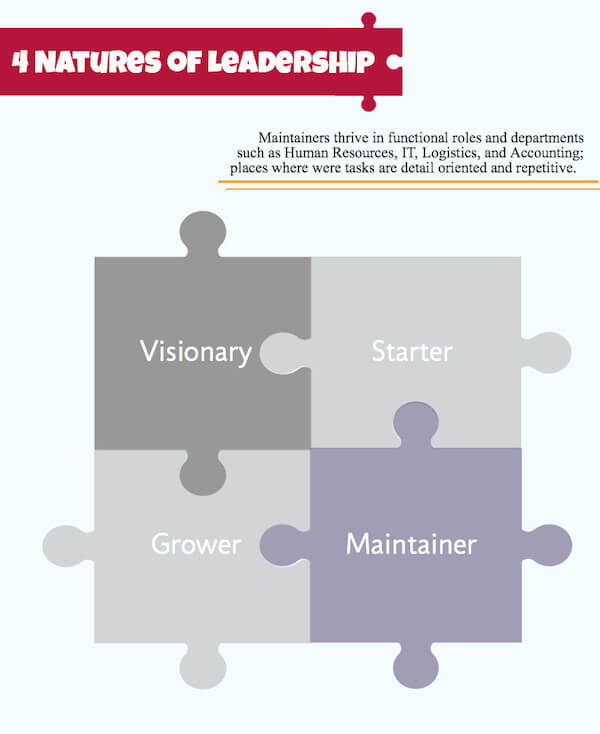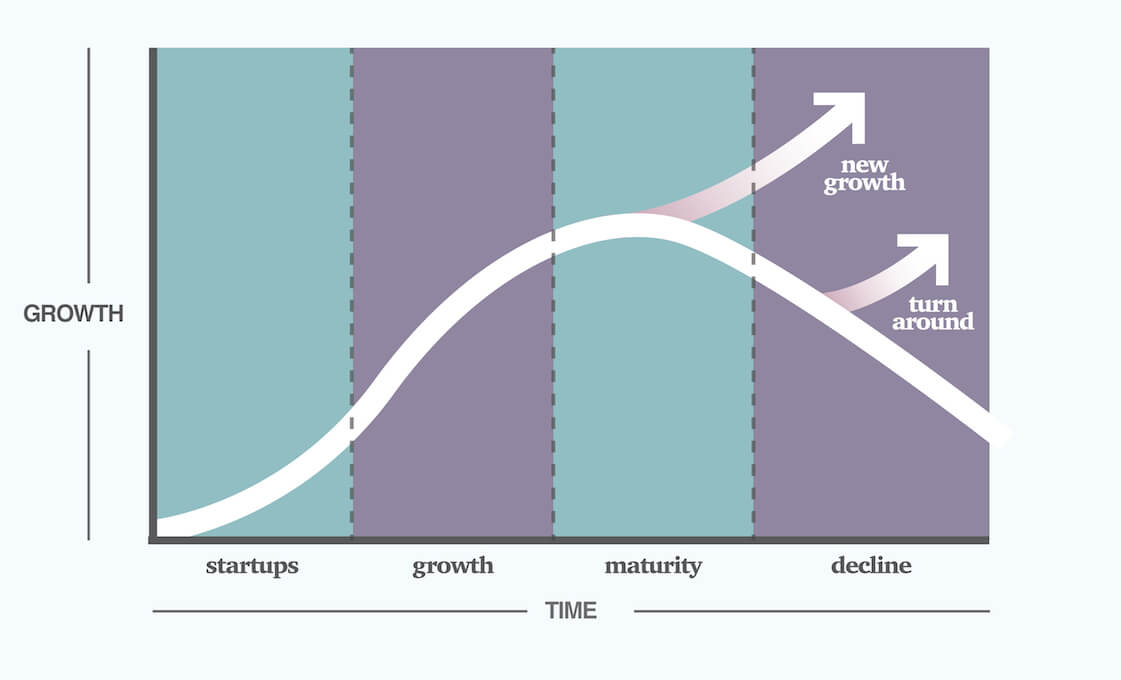
Photo by rawpixel.com from Pexels
In this Family Business Leadership Series, we discover the four Leadership Natures and explains how to unleash their highest potential. This article is dedicated to the fourth and final Leadership Nature, The Maintainer.
The case of Tom and his family business
Tom had all of his children in the business and truly believed there were enough roles and projects to meet all their various talents and skills. So he was a little concerned by his middle child Emma who didn’t seem to have a spark. Emma had excelled in school, always submitting assignments on time, and following instructions meticulously. However in team meetings, Tom noticed that she rarely made suggestions or offered her opinion on any new projects. Currently, Emma was in new sales generation, and her quotas were not meeting expectations. Tom had placed her there to see if it would light a fire under her, but this was not working out as he had hoped. What Tom did notice was that Emma’s sales reports were always submitted on time, correctly filled out. She even collected the reports for the whole department, reviewed the data, correlating the information in a concise summary report — which recently had become color coded for clarity. These reports had now become a valuable resource to the organization, even though Emma’s own sales were lacking.
When he told her how useful the sales data was for tracking to the company, she immediately offered her assistance to create procedures for the HR department on overtime costs. He then realized her spark was to work in areas he perceived as tedious and repetitive. While he and others in the family would be focusing on new growth products, Emma would maintain systems, ensuring the bills were paid on time and procedures followed to a tee.
The role of the Maintainer
Once the systems and processes have been put in place by the Grower, it is the Maintainer who keeps them going. While Visionaries and Starters, such as Steve Jobs and Richard Branson get the media attention, they all hired very talented Maintainers to oversee the day to day operations of their organizations.
Maintainers thrive in functional roles and departments such as Human Resources, IT, Logistics, and Accounting. Places where were tasks are detail oriented and repetitive. By Maintainers working in or managing these departments effectively, both internal staffing needs and external forces (such as suppliers, banks/investors, and clients) always have a high degree of confidence in the organization.
Day in, day out, Maintainers can be counted to do their job. They don’t get bored, and for the most part are steady performers.
However change is part of life, and events such as market shifts and new technology means that procedures most likely will have to adapt and evolve in a changing world. When a company decides it’s time to introduce a new product, or even a new system (such as payroll or account receivable), a Maintainer inevitably resists or attempts to block this new initiative. Change for a Maintainer means they have nothing to maintain. So they can feel anchorless, a very uncomfortable position to be in.
The challenge for Visionaries and Growers, the ones who consistently create and implement new ideas, is communicating their vision to Maintainers. The message has to be well thought out and take into consideration what is in it for the Maintainer to learn new methods. Once “buy-in” occurs, Maintainers can be strong advocates for the change.
Over the course of our work with a wide range of family companies, we have uncovered 2 sub-categories of Maintainers both of whom we have found in leadership roles:
The Active Maintainer
Though maintaining existing procedures and rules is the primary objective to feel comfortable and safe, Active Maintainers will show a willingness to improve the systems. Similar to the Starter, they perceive their job as never complete and constantly look for ways to enhance the process for the next cycle.
The Static Maintainer
This sub-type of Maintainer is rock steady, sometimes to their detriment. Very difficult to get him to think “outside the box”, he is satisfied with the way things are. His goal is to maintain the status quo. The Static Maintainer views the company as a way to have steady employment, a good lifestyle, security and financial stability. And for some organizations, it might be years before the Static Maintainer has to deal with a challenge to their domain and tasks.
Maintainer Strengths
- Predictable work ethic
- Very focused and goal oriented
- Problem seekers
- Good follow-through on what they like
- Longer attention spans
- Like to create predictability
Maintainer Weaknesses
- Cautious and risk averse
- Contrarian
- Need to be convinced that change will be safe for them and the company
- Can be controlling and limit resources
- Can create tension between companies need for growth and the Maintainers need for predictability and sameness
Maintainers and the Business Cycle
Maintainers can typically be found leading mature companies. Where everything is in place and the organization only requires occasional adjustments. He knows the company or their department inside and out, and is a valuable resource for information and context. Maintainers do not “see” the future in their head, and they process information differently than Growers and Visionaries. So asking for input into the future growth of a company will be difficult for these people. Never place a Maintainer as the leader in a growing company, they can’t provide the energy or be willing to take on risks when required.
It is worth noting that an Active Maintainer is a good choice to run a Franchise or Dealership oriented business, he will more readily follow the rules and processes set out by the head office than a Grower, who may want to follow their own rules and establish new processes or re-invent the rules of operation.
A potent combination is an Illuminary Grower and an Active Maintainer who has fully agreed to the direction presented. The former provides the energy, while the latter watches over the foundation.
Strategies for Maintainers in the next generation
- Place her in a role where she can find predictability and stability
- Expect to have to “sell them” on growth and new directions
- Place them in existing projects where the need is continuity
- Over time challenge him with new tasks to explore how entrenched he is as a Maintainer











